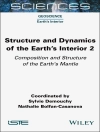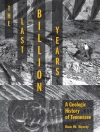This book presents recent findings on the structure and evolution of the Southern Andes. Through a detailed description of a series of orogenic segments reviewed by the different groups that have worked with structural and geophysical tools in each area over the last several years, it illustrates the diversity of mechanisms that have impacted strong orogenic gradients and consequently mountain morphology, from the southern Pampean flat subduction zone to the southern tip of the continent (33-56º S). The book also revises our conventional understanding of the source of the different Mesozoic to Cenozoic sections exhumed in the orogenic wedge, with the objective of discussing basin mechanisms through time. A final chapter discusses probable orogenic controls that have acted together in order to explain structure, the different deformational stages and intra-orogenic extensional collapses that affected the fold and thrust belt over time.
Mục lục
Preface An introduction to the Southern Andes (33-50ºS): Book structure.- Chapter 1 Density and thermal structure of the Southern Andes and adjacent foreland from 32 to 55ºS using earth gravity field models.- Chapter 2 Changes in source areas at Neuquén Basin: Mesozoic evolution and tectonic setting based on U-Pb ages on zircons.- Chapter 3 Cenozoic orogenic evolution of the Southern Central Andes (32-36°S).- Chapter 4 The transitional zone between the Southern Central and Northern Patagonian Andes (36-39ºS).- Chapter 5 Progression of the deformation in the Southern Central Andes.- Chapter 6 Tectonic evolution of the Northern Patagonian Andes (40ºS).- Chapter 7 Cenozoic deformational processes in the North Patagonian Andes between 40º and 43ºS.- Chapter 8 The North Patagonian orogen: Meso-Cenozoic evolution from the Andes to the foreland area.- Chapter 9 Growth of the Southern Patagonian Andes (46 -53°S) and their relation to subduction processes.- Chapter 10 Orogenic growth of the Fueguian Andes (52-56°) and their relation to tectonics of the Scotia Arc.












